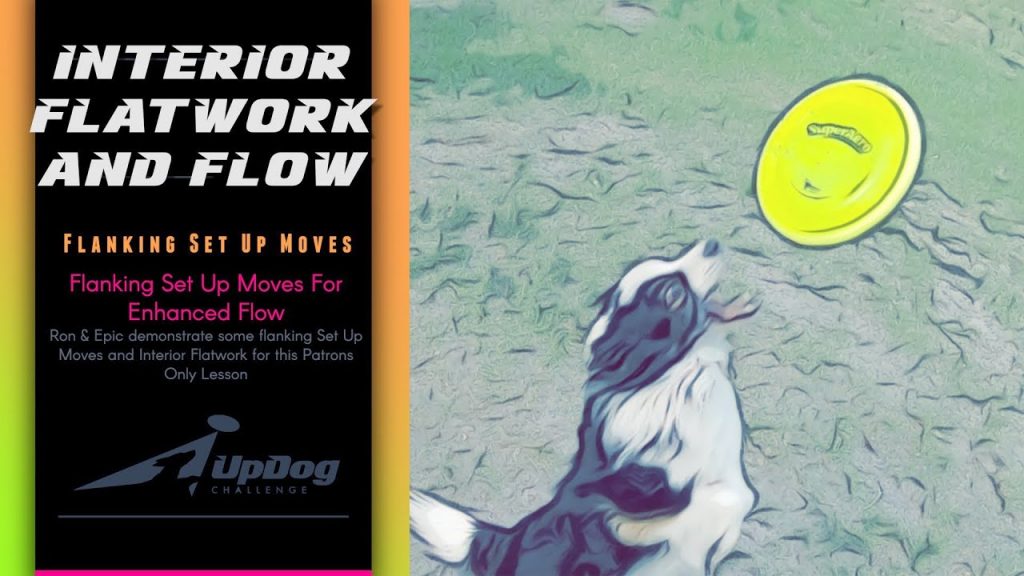
Interior Flatwork | How to Stop, Line Up & Lock In Your Disc Dog in 14 Seconds
Stopping and lining up your disc dog is built upon Flatwork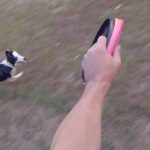 Flatwork is the stuff that happens between the catches. How the team moves and transitions, often without the disc, is flatwork. Flatwork concepts in disc dog are taken from the agility and herding... More. If you and your dog are good at this, you are good at Flatwork.
Flatwork is the stuff that happens between the catches. How the team moves and transitions, often without the disc, is flatwork. Flatwork concepts in disc dog are taken from the agility and herding... More. If you and your dog are good at this, you are good at Flatwork.
“What do you mean, I don’t run around with my dog? My dog doesn’t run in circles. I don’t even stick my arm out…”
This is the greatest misconception of Flatwork, that it is some kind of big arcing movement requiring that the handler run with the dog, and that you need to stick up your arm and pull the dog around in Basic Flatwork Position Basic Flatwork Position (BFP) is a standard position of the handler in the Working Flank; hand reaching out towards the dog (usually with a disc) with the dog on the same plane as... More.
Basic Flatwork Position (BFP) is a standard position of the handler in the Working Flank; hand reaching out towards the dog (usually with a disc) with the dog on the same plane as... More.
Flatwork is the simple application of positional pressure and reward Placement. Expressing and executing that simple application to get the type of movement you want is anything but simple, but it is that easy.
20-24 Seconds – A Non-Example From Front Position (0-4 Seconds)
At 20 seconds, the dog is retrieving on a slight clockwise flank and the handler is signaling clock as well. With the right foot back, the angle of the body is pulling the dog to the handler’s right. It’s subtle, but it’s there, you should be able to see it.

At 0:21, right as the teeth come off on the drop, the handler leans forward and left, towards the dog. This is counter clock pressure. What does the dog do?

0:23 handler pulls clockwise with chest, disc, and weight shift. Dog moves with handler. This movement creates a clockwise line that will be changed with the next shift if pressure to lock the dog down into counter clock.

At 0:24 the handler shifts back to counter. This waggle type movement is necessary to get timed and hooked up before hooking up. It is the thing that was missing at the beginning of the skill and is the main problem with a Frontal Approach.

This bumbling set up does not have to happen. In the video it was set up as a non-example,”What happens if the handler does nothing.”
To make this happen cleanly from a Linear Retrieve simply requires the handler do this little waggle maneuver while the dog is approaching.
We’ll get a good look at proper application of this skill on the Flanking Retrieve.
45 – 47 Seconds | Flanking Retrieve Example (4-6 Seconds)
The Flanking Retrieve provides a much more clean example of stopping, lining up, and locking the dog in to Front Front is a stable position directly in front of the handler. Front is an traditional obedience skill. Usually your dog sits in this position, but standing is often acceptable as well, especially in... More PositionIn the Play+ philosophy, "Position" is the final stage within the "Next" phase of a Cycle of Play. It acts as a pivotal link between the "Next" phase and a new "Now" phase. More. There is no need for a waggle type movement because the line and directional pressure are already applied on the entry.
Front is a stable position directly in front of the handler. Front is an traditional obedience skill. Usually your dog sits in this position, but standing is often acceptable as well, especially in... More PositionIn the Play+ philosophy, "Position" is the final stage within the "Next" phase of a Cycle of Play. It acts as a pivotal link between the "Next" phase and a new "Now" phase. More. There is no need for a waggle type movement because the line and directional pressure are already applied on the entry.
At 0:45, the dog is running to the front of the handler, and the handler is declared in a counter clock direction. This places strong positional pressure and reward placement (where would the disc be thrown for a backhand from this position) towards the front of the handler and the clockwise direction. Notice that this is happening at 8-10 yards.

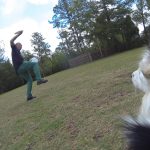 Out to the side of the handler is the Flank. If the dog is out to the handler's right or left the dog is on Flank. If the dog is moving with the... More – Ron has completely declared a Clockwise Flank and Eppie has received the signal 8-10 yards away. This is a very strong signal because both Positional Pressure and the potential Reward Placement of a Backhand toss tell Eppie that the game is happening in the lower right hand corner. Eppie is late to the Party…
Out to the side of the handler is the Flank. If the dog is out to the handler's right or left the dog is on Flank. If the dog is moving with the... More – Ron has completely declared a Clockwise Flank and Eppie has received the signal 8-10 yards away. This is a very strong signal because both Positional Pressure and the potential Reward Placement of a Backhand toss tell Eppie that the game is happening in the lower right hand corner. Eppie is late to the Party…The handler is setting the Clockwise Flank at 0:46. This setting or selling of the Flank is important to set the dog on the line that will be counteracted with the oppositional pressure moving in the other direction. Again, everything is screaming clockwise to the dog, but the handler is starting to shift, so the dog is paying attention.

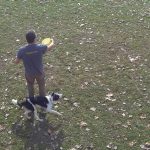 Setting the Flank means to throw out to your right or left. It’s really simple, just face any direction, send the dog Around, and then turn and throw the disc out to the... More – Ron has started to pull Clock and Eppie is coming in hot. It looks as if Ron might be shifting directions, so Eppie is paying close attention.
Setting the Flank means to throw out to your right or left. It’s really simple, just face any direction, send the dog Around, and then turn and throw the disc out to the... More – Ron has started to pull Clock and Eppie is coming in hot. It looks as if Ron might be shifting directions, so Eppie is paying close attention.0:47 – Whoa! The Flank has shifted! Notice the dog is slamming on the brakes – a dust cloud is visible as the dog halts the clock movement and shifts to the Counter Clock Flank. If the handler freezes here with the Basic Standing PositionStanding in front of the dog with the disc held vertically in the throwing hand is Basic Standing Position (BSP), a foundational position in the Yachi Method. More Pose, the dog is locked in to this position.

0:47 – Locking the Dog In – Eppie is skidding to a stop, literally, as the flanks are shifted from Clock to Counter. This is a Front Cross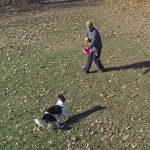 On a Front Cross, your dog switches Flanks in with you in front of them. From Clock to Counter Clockwise Flank or vice versa. Taken directly from the canine agility world, the Front... More, and it’s happening right here, right now. All that Ron has to do is freeze in BSP Counter (Counter Clock Basic Standing Position), and Eppie is locked in to the Front Position. Boom!
On a Front Cross, your dog switches Flanks in with you in front of them. From Clock to Counter Clockwise Flank or vice versa. Taken directly from the canine agility world, the Front... More, and it’s happening right here, right now. All that Ron has to do is freeze in BSP Counter (Counter Clock Basic Standing Position), and Eppie is locked in to the Front Position. Boom!

48 – 52 Seconds| Another Angle in Instant Replay (6-11 Seconds)





1:01 – 1:04 | With a Little More Flank… (11-14 Seconds)



This Is Interior Flatwork
This is Interior Flatwork. Interior Flatwork is how things should work. Other things can, and even should be done for style and creativity’s sake, but if you can’t do this with your dog, you’re in trouble.
Notice that a Spin or Twist maneuver that is often used to accomplish the stopping, lining up, and locking in is actually playing on the same idea – using the flank in one direction – too much in that direction followed by movement in the opposite direction to create pressure that stops the dog and locks him in.
As mentioned above, doing other moves to get set up is cool and can and should be a benefit to the numbers on the judges scorecards, but having to do other moves or not being able to do this is not as cool as many people think it is.





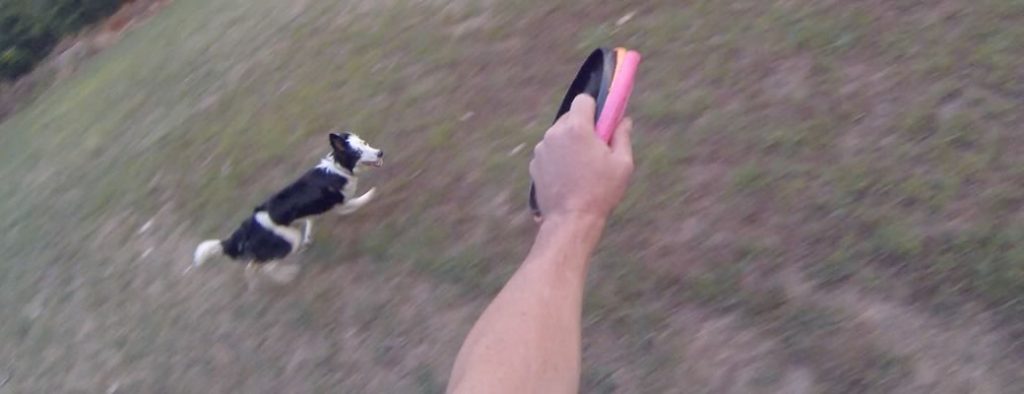

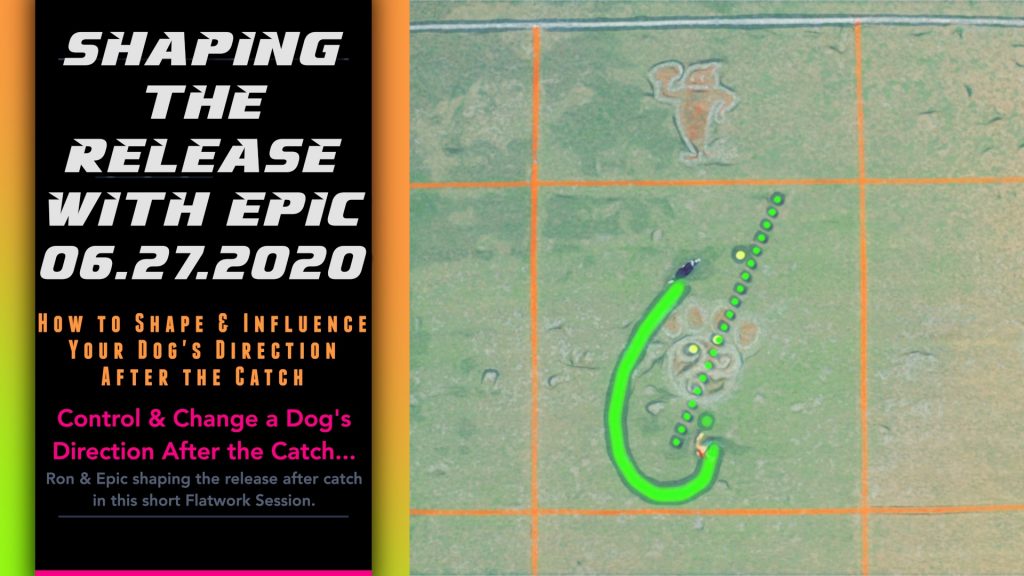
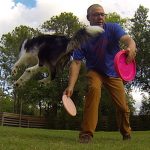
Responses